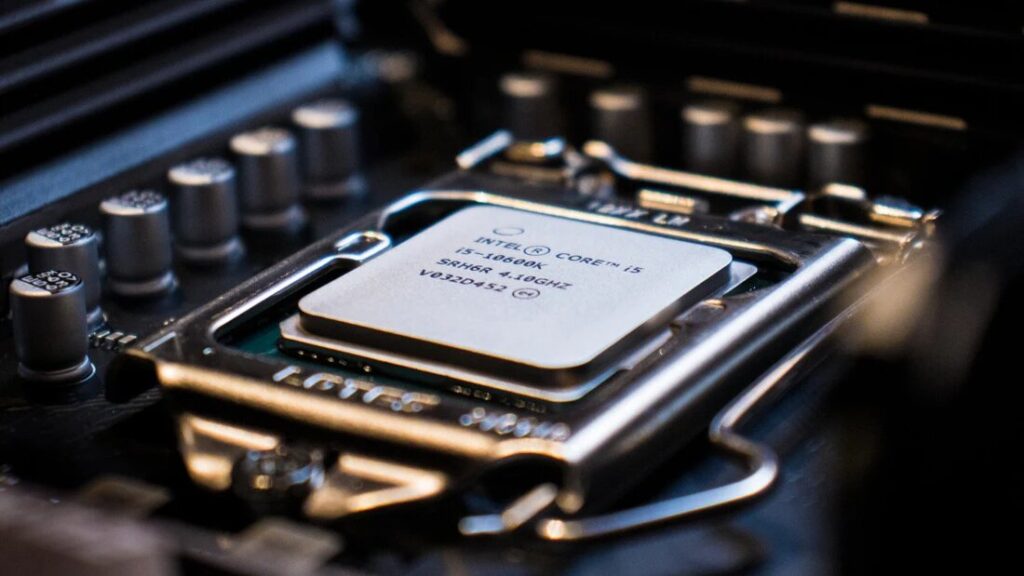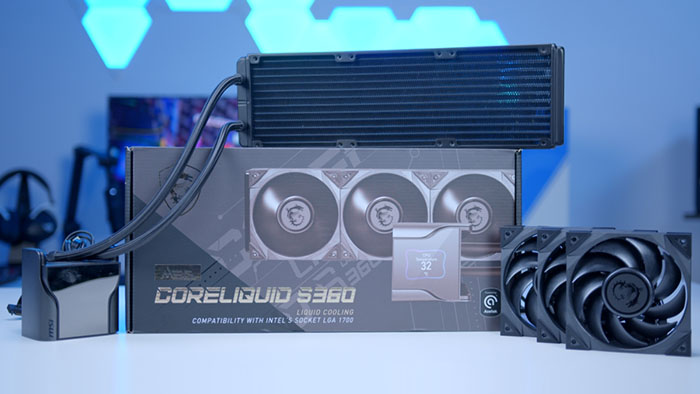The Intel i9 processor is one of the most powerful CPUs on the market today, especially for high-performance gaming, video editing, and other resource-intensive tasks. However, the Intel Core i9 series has faced significant issues with overheating, as detailed in reports by several tech reviewers, including Gamers Nexus. This has raised concerns over motherboard compatibility, thermal management, and the overall reliability of this flagship processor.
In this article, we will dive deep into the root causes of Intel i9 overheating, examine motherboard factors, and offer insights into the best cooling solutions to mitigate this issue. This comprehensive guide will be valuable for those looking to push their i9 CPU to its limits without risking thermal throttling or hardware damage.
Why Intel i9 CPUs Overheat – A Technical Breakdown!
The Intel Core i9 lineup, especially in the 11th, 12th, and 13th generation, is known for delivering top-tier performance. These processors are engineered with a high number of cores and threads, significantly boosting multi-core performance in modern applications. Nevertheless, there is a price for this performance: production of heat. The high clock speeds, coupled with Intel’s Turbo Boost Technology, often push the thermal envelope.
1. Thermal Design Power (TDP) and Power Consumption:
One of the main reasons the Intel i9 CPUs overheat is due to their high Thermal Design Power (TDP). TDP represents the amount of heat a CPU can dissipate under maximum load. For example, the Intel Core i9-11900K has a TDP of 125W, but during peak operations, such as gaming or rendering, power consumption can far exceed this limit. This excess power translates directly into more heat, which requires efficient cooling mechanisms to manage. If not properly addressed, this can lead to thermal throttling, where the CPU automatically reduces its performance to avoid overheating.
2. Overclocking and Heat Generation:
Another contributing factor to overheating is overclocking. Gamers and enthusiasts often push their Intel i9 processors beyond the factory-set clock speeds to squeeze more performance out of their hardware. However, overclocking significantly increases heat output, sometimes doubling the CPU’s thermal load. If users do not invest in high-quality aftermarket cooling solutions, their system may struggle to dissipate the extra heat, leading to performance degradation or even permanent damage to the CPU.
Motherboard Factors That Influence Intel i9 CPU Overheating!
The motherboard plays a crucial role in how well an Intel i9 processor manages heat. A motherboard with a poor power delivery system can struggle to supply stable power, leading to overheating and throttling. High-end motherboards feature robust VRMs (Voltage Regulator Modules), which regulate power efficiently, reducing thermal strain on the CPU.

Additionally, motherboard BIOS settings influence temperature management, as some boards enable aggressive auto-overclocking by default, which increases heat output. Choosing a motherboard with well-designed cooling solutions, such as heatsinks over VRMs and efficient PCIe slot placement, can help manage overall system temperature.
The Role of Motherboards in i9 Overheating Issues!
While the Intel i9 processors themselves are known for heat-related issues, the motherboard plays a crucial role in thermal management. Poor motherboard selection can exacerbate the problem, while the right motherboard can help mitigate overheating.
1. Power Delivery and VRM Design:
One of the most critical factors when choosing a motherboard for an Intel i9 CPU is the Voltage Regulator Module (VRM) design. VRMs are responsible for delivering clean, stable power to the CPU. A poorly designed or underpowered VRM will struggle to keep up with the i9’s demands, particularly under heavy workloads or when overclocking. This can cause the motherboard to overheat, which in turn can affect the CPU’s thermal performance.
For example, premium motherboards such as the ASUS ROG Maximus XIII Hero or the MSI MEG Z590 Godlike are equipped with robust VRMs that can handle the i9’s high power consumption without overheating. On the other hand, budget motherboards with less sophisticated power delivery systems may not be able to keep up, leading to higher temperatures across the board.
2. BIOS Settings and Thermal Throttling:
Motherboards also play a key role in BIOS configurations that affect CPU performance and thermal behavior. Many motherboards come with auto-overclocking features, which may push the CPU beyond its thermal limits without proper cooling. Users should manually configure their BIOS settings to ensure that their Intel i9 processor does not run hotter than necessary. Features like voltage control, fan speed management, and thermal limits can all be adjusted to optimize cooling.
3. PCIe and Cooling Layout:
Motherboard layouts that incorporate PCIe slots for high-performance GPUs can also affect cooling. The proximity of the CPU socket to the GPU or other heat-generating components can lead to hotspots on the motherboard, especially if airflow is restricted. When selecting a motherboard, it’s essential to consider the layout and cooling design to ensure optimal thermal performance for the Intel i9 processor.
Cooling Solutions to Prevent Intel i9 Overheating!
To combat the overheating issues associated with Intel i9 processors, users must invest in adequate cooling solutions. While air cooling can work for moderate use cases, liquid cooling and custom loops are often necessary for overclockers or those pushing their i9 CPU to its thermal limits.
1. Air Cooling: High-Performance Fans and Heatsinks:
The most basic form of cooling for an Intel i9 CPU is air cooling. High-performance air coolers, such as the Noctua NH-D15 or the be quiet! Dark Rock Pro 4, offer excellent cooling performance for a fraction of the cost of liquid cooling solutions. These coolers use large heatsinks and dual-fan configurations to dissipate heat efficiently. However, even the best air coolers may struggle to keep temperatures low under sustained heavy loads or overclocked conditions.
2. Liquid Cooling: AIO vs. Custom Loops:
For more demanding users, liquid cooling is often the preferred choice. All-in-One (AIO) liquid coolers, like the Corsair H150i Elite Capellix or the NZXT Kraken Z73, provide superior cooling performance compared to air coolers. These units feature radiators and pumps that circulate coolant over the CPU, effectively drawing heat away from the processor.
However, for enthusiasts looking to push their Intel i9 processors to the extreme, custom water-cooling loops offer the best performance. Custom loops allow users to design a bespoke cooling system tailored to their specific build, including CPU and GPU cooling. While more expensive and complex to set up, custom loops provide unmatched cooling performance and can keep even heavily overclocked Intel i9 CPUs running at safe temperatures.
3. Thermal Paste and Conductivity:
Another often overlooked factor in CPU cooling is the thermal interface material (TIM), commonly known as thermal paste. Applying a high-quality thermal paste, such as Thermal Grizzly Kryonaut or Arctic MX-4, ensures optimal heat transfer between the CPU and the cooler. Some extreme overclockers opt for liquid metal thermal compounds, which offer superior thermal conductivity but require careful application to avoid short-circuiting components.
Choosing the Best Cooling Solution for Intel i9 Processors!
Selecting the right cooling solution is essential for preventing Intel i9 CPUs from overheating. Air coolers like the Noctua NH-D15 or be quiet! Dark Rock Pro 4 provide excellent thermal performance for stock settings and moderate overclocking. However, liquid cooling solutions, particularly All-in-One (AIO) coolers such as the Corsair H150i Elite Capellix, offer superior heat dissipation for demanding workloads.

Enthusiasts looking to maximize performance can opt for custom water-cooling loops, which provide the best cooling efficiency but require more expertise to install. Regardless of the cooling method, proper thermal paste application and optimized airflow are necessary for maintaining safe temperatures.
Optimizing Airflow for Better Cooling!
Beyond choosing the right cooling solution, optimizing your system’s airflow is critical to maintaining lower temperatures. A well-ventilated case with intake and exhaust fans can significantly reduce the temperature inside the case, which directly affects the CPU’s cooling performance.
1. Case Selection and Fan Placement:
When building a system with an Intel i9 processor, it’s important to select a case that promotes efficient airflow. Cases with mesh front panels, such as the Fractal Design Meshify C or the Lian Li Lancool II Mesh, are ideal for maximizing airflow. Proper fan placement is also essential. Placing intake fans at the front and bottom of the case and exhaust fans at the top and rear ensures that hot air is effectively removed from the system.
2. Fan Speed Control and Monitoring:
Modern motherboards offer fan control software that allows users to adjust fan speeds based on the CPU’s temperature. By increasing fan speed during heavy loads, users can maintain optimal airflow and prevent the CPU from overheating. Regular monitoring of system temperatures using software like HWMonitor or AIDA64 is also recommended to ensure that cooling solutions are working as intended.
FAQs:
1. Why does my Intel i9 CPU overheat even under normal usage?
Intel i9 CPUs generate significant heat due to their high core count, clock speeds, and power consumption. Even during normal use, features like Intel’s Turbo Boost can push the CPU beyond its base power limits, leading to high temperatures. If your cooling solution is inadequate or airflow is restricted, overheating can become a persistent issue.
2. Can a motherboard cause my Intel i9 processor to overheat?
Yes, the motherboard plays a crucial role in managing an Intel i9’s power delivery and thermal performance. Motherboards with weak VRMs (Voltage Regulator Modules) may struggle to supply stable power, causing overheating and even throttling. High-end motherboards with robust VRMs, optimized BIOS settings, and effective cooling designs help mitigate these issues.
3. Is liquid cooling necessary for an Intel i9 processor?
While air coolers can handle moderate workloads, liquid cooling—especially All-in-One (AIO) systems—offers better thermal performance for overclocking and demanding tasks. Custom water-cooling loops provide the best heat dissipation, but they are more complex and expensive. Users should choose a cooling solution based on their usage and performance needs.
4. How can I optimize airflow in my PC case to reduce CPU overheating?
To improve cooling, use a case with good airflow, such as one with mesh panels. Proper fan placement is also key—intake fans at the front and bottom bring in cool air, while exhaust fans at the rear and top remove hot air. Monitoring fan speeds and CPU temperatures with software tools like HWMonitor can help ensure an optimal cooling environment.
5. Does using better thermal paste help in reducing Intel i9 overheating?
Yes, applying high-quality thermal paste, such as Thermal Grizzly Kryonaut or Arctic MX-4, improves heat transfer between the CPU and cooler, lowering temperatures. For extreme cooling, some enthusiasts use liquid metal thermal compounds, but these require careful application to avoid damaging components.
Conclusion:
The Intel Core i9 is an immensely powerful processor, but with great power comes great responsibility—especially in terms of managing heat. Whether you’re a gamer, content creator, or overclocking enthusiast, ensuring that your Intel i9 CPU is paired with the right motherboard, cooling system, and airflow optimization is crucial to preventing overheating and maintaining peak performance.










